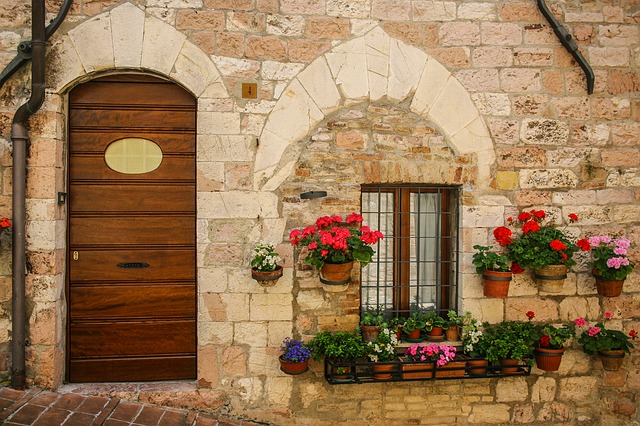What It Takes To Paint A Brick House Exterior
Like cars and gardens, houses need makeovers at one point or another. Over time, they succumb to old age. Colors then fade and the houses start looking, old, dull and ugly. The external walls get exposed to weather changes like too much sun and rain. In a nutshell, you have to repaint the walls. But just how do you go about it when what you have on your wall are bricks? Do you just repaint like you would on a normal concrete wall? Certainly not. Here’s how to go about it.

Use mild solutions
That is, refrain from using any acidic cleaning solutions. Refrain too from using hard bristled brushes on the bricks. Acid cleaning solutions may seem to offer the best solution. The long term effect is however much more devastating. The structural integrity of the bricks may be compromised. That is mainly because, bricks are naturally porous. The acid will with time ‘eat up’ the brick especially when it rains and water dilutes the acid laced up in the bricks.
Acrylic latex and elastodynamic paints
They are ideal on bricks for pretty much obvious reasons. Elastodynamic paints are water repellant. That means they can keep your bricks safe during extreme weather conditions, especially when it floods. It is also dense with high elasticity. It can easily fill pores and cracks on the surface and secure your bricks. Acrylic latex paints are also ideal. They are moisture resistant, which means they cannot allow mold or mildew to form on your brick walls. They are also extremely adhesive and durable.
The procedure
Make sure you have everything needed before you get started. That is, the right tools and equipment. You will need a pressure washer, plastic sheets, newspapers, stiff bristled brushes, caulk and scrapers. Start off by cleaning the bricks with water. Be sure to use a pressure water that can let out 1000 to 2000 PSI. You will need that amount of water force to help you get rid of stubborn dirt residues from your wall. To cover maximum area and save time, spray the water from left to right or from top to bottom. For tough stains, use hard bristled brushes and some amount of soap.
Cover your valuables
This is where old newspapers come in handy. Cover everything you do not need to paint, from your windows and doors to flower beds and window seals. Secure the areas with a painter’s masking tape. Be keen on electrical outlets. A smart move is to remove any electrical fitting or appliance until you are done with painting.
Cleaning cracks
Use a scrapper to do this. Examine your bricks for cracks then clean them before filling them. Widen the cracks a little before you can fill them with caulk. Be sure to use pesticides if you suspect they made a home in the cracks. For fillers, use 100% acrylic caulking. You may need a caulk gun to fill all gaps and cracks with ease. The gun will go a long way to help you fill even the tiniest gaps and cracks. Allow the filling to dry off completely before you can apply primer.
Applying the primer
Give your bricks a wash of primer before painting. The primer will create a smooth surface, make your work easier and help you come up with aesthetically appealing color schemes. The primer will also give your wall extra protection. Again, you have to be patient after applying primer. Let it dry completely before painting the bricks.
Painting the bricks
Apply your desired paint with a roller, paint brush or paint sprayers. Then while painting, use the right painting technique and stick to a direction of progress. The best way to go about this is to paint the bricks from right to left. The trick is to ensure similar paint strokes on the bricks. Remember to overlap the already painted bricks as you move from one side to the other. This will ensure you cover a bigger surface with ease and avoid ending up with uneven paint shades.
Regarding what to use between rollers, paint brushes or paint sprayers, don’t be afraid to use all of them. Remove areas may force you to use brushes. Some color schemes may force you to either go for the sprayer or roller.
Seeking expert assistance
This is where most homeowners have failed to see the truth when it comes to painting. The truth is, painting your home may be a Do It Yourself project, but you won’t be able to execute certain paint patterns and color schemes on your own. Your best bet is therefore to seek expert assistance for painting your house exteriors.
A good exterior painting expert should examine your bricks, take into account your budget and even the weather around your neighborhood. The expert will then advise you accordingly on which paint to use. The expert will even factor in your house design and recommend exterior painting ideas that will match your house’s exterior surface. With so many specialty skills to gain, you should certainly trust exterior painting contractors in Toronto!